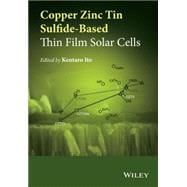The semiconducting compound (CZTS) is made up earth-abundant, low-cost and non-toxic elements, which make it an ideal candidate to replace Cu(In,Ga)Se2 (CIGS) and CdTe solar cells which face material scarcity and toxicity issues. The device performance of CZTS-based thin film solar cells has been steadily improving over the past 20 years, and they have now reached near commercial efficiency levels (10%). These achievements prove that CZTS-based solar cells have the potential to be used for large-scale deployment of photovoltaics.
With contributions from leading researchers from academia and industry, many of these authors have contributed to the improvement of its efficiency, and have rich experience in preparing a variety of semiconducting thin films for solar cells.








